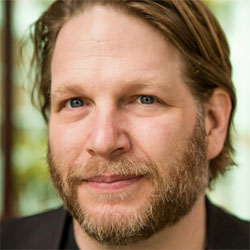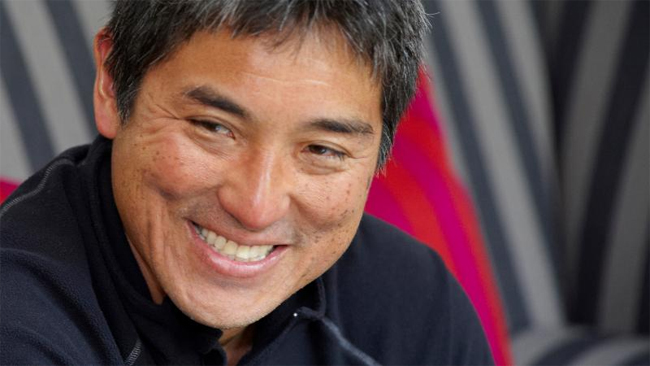Twitter is all about making connections and making your voice heard. Therefore, it should follow on that following more people will allow you to make more connections, shouldn’t it?
In this post I will be looking at whether this is true and examining the pros and cons of following a lot of people on Twitter.
Aiming For More Followers
The premise of Twitter is relatively simple. You can post updates to Twitter and whoever follows you will see your updates on their feed. This system encourages Twitter users to attain more followers so that more people see their updates. Twitter users who have a lot of followers are in a powerful position as they can promote websites, products, services, films and more. Many large companies are now offering freebies to high profile users as they know that a few tweets from them will give them a lot of publicity.
So the goal, for most people, is to get more followers. Many Twitter users will strive for more followers at any costs. There are lots of Twitter scripts such as TweetAdder that will do this for you. These scripts take advantage of the fact that many Twitter users will follow people who follow them.
- They follow up to 1,000 Twitter users per day (though less is advised, particularly at the start).
- They wait a few days and wait to see who has followed back.
- They unfollow any Twitter user who didn’t follow back.
Many Twitter scripts will also unfollow the Twitter user that followed you so that your following count remains low and your followers count remains high.
Ethically, I honestly have no issues with people who do this to increase their Twitter accounts. Before doing research for this article, I did however think that the whole process of getting followers at whatever cost was pointless. The way I saw it, there is no point in having 50,000 Twitter followers if no one engages with you. I assumed that most followers would be bots and Twitter users who don’t care what others say. After researching the issue more, I am not so sure.
We are all looking for more followers but we should be looking for more targeted followers. I’d always take 10 good Twitter followers who reply to me and retweet my messages over 1,000 empty Twitter accounts that are never used. Despite this, there is value in your messages being received by large volumes of people.
The Upside Of Following A Lot Of People
The basic premise of how Twitter scripts increase followers can be applied to your own account manually. All you have to do is follow interesting and influential people that you want to follow and engage with them. Over time you will acquire more followers through replies and retweets.
The keyword is engagement. If you are following more Twitter users, you can engage with more people. Your Twitter name will be shown on more feeds because of this. This helps you network with more people and raises your profile in the process (particularly if you have a presence such as a blog, website or service online).
The Downside Of Following A Lot Of People
I don’t care whether my following to follower’s ratio is high or not however I purposely try not to follow people unless I find them useful or entertaining.
When I first started using Twitter I started following a lot of people. I quickly discovered that Twitter was unmanageable because of it. My feed was full of updates from people I had no real interest in. In effect, I was having a one way conversation, as updates from people I wanted to follow were being flooded away by updates from people I didn’t.
As time went by, the number of people I followed on Twitter increased, though I periodically removed someone if I found they were no longer relevant to me.
The introduction of Twitter lists has improved this situation as you can create lists of your favourite users. You therefore don’t need to worry about missing relevant updates.
Is Following Too Many People A Mistake?

Most of the top Twitter users don’t follow a lot of people. There are exceptions (as you will see) but generally speaking I would say the Twitter users with millions of followers only follow a few hundred people themselves. I expect that this is because they don’t need to follow other people in order to increase their number of followers, as they are already popular and people want to follow them.
I’m curious as to whether many Twitter users later change their opinion on following people. Chris Brogan is a good example of this. He has written books on social media and has over 225,000 followers, so it’s safe to say that he knows a thing or too about Twitter.
In 2008 Chris wrote an article explaining how he can use Twitter at volume. When he wrote the article he was following around 17,000 people on Twitter. Fast forward three years: Chris decided to unfollow over 131,000 people on Twitter. He explained that he was receiving over 200 spam messages a day via direct message – which pretty much ensures he cannot use the Twitter message system (though I suspect this is true for all Twitter users with large volumes of followers).
What I found interesting was the negative response he got from people. He received lots of emails and nearly a hundred messages on Twitter from people who were angry about him unfollowing them. Today Chris follows only 289 people on Twitter, considerably less than the 131,000+ people he was following one year ago.
Many popular Twitter users who used Twitter from the beginning got high following counts by following others and then unfollowing everyone later. Some did this on purpose whilst others generally changed their views on the optimum way to use Twitter. As with everything in life, there are exceptions.
Follow Me And I’ll Follow You
Former Apple Chief Evangelist and established author Guy Kawasaki is certainly the exception when it comes to using Twitter. He is quote open about the fact he uses it to promote his websites. What seems to annoy a lot of people is that self-promotion is all he does – he never replies to anyone or speaks about any other Twitter users.
His Twitter account currently has around 1.2 million followers and he follows close to 300,000 Twitter users himself. This pales in comparison to the 1 million or so Twitter users that Hootsuite follows but is certainly one of the highest Twitter following counts.

Jay Baer explained how Guy uses Twitter in his article Is Social Media Strategy Required or Redundant?:
Each day on Twitter, Kawasaki shares 25-50 links to interesting content on a vast array of topics. He does not interact personally from his @GuyKawasaki account. No replies. No mentions. No thanks. Just link after link after link after link. Unlike most heavy curators on Twitter, however (including me), Kawasaki does not link to source material. Instead, he links to his own Alltop website, where he excerpts the original content and then includes a link for the “rest” of the story.
In short, Guy uses Twitter specifically to link to his AllTop website. Apparently he retweets the same link 3 times a day at 8 hour interval to ensure the messages reach as many people as possible. It’s clear that he followed thousands of people on Twitter in order to raise his own profile. The question is: is there anything inherently wrong with this?
Thousands of people who are apparently ‘Social Media Experts’ are automating their tweeting. I’d go as far as saying that many people who are claiming to be experts have simply installed a Twitter following script and then declared themselves as a leader in social media.
Jame Blute makes no apologies for automating many elements of using Twitter. He automates:
- Unfollows (non reciprocal follows).
- Research on who to follow.
- Follows (99% time).
- Timed Tweets (Not all tweets)
I can understand the need to automate many of the above tasks, particularly if you are following people specifically to get more followers and push more people to your website. Not everyone agrees with this. Pam Moore wrote a fantastic article on the issue yesterday entitled Dear Social Media Leaders, Practice What You Preach and #BeHuman!.
Being human means being real. It means connecting as human beings. It means not auto scheduling posts 7 days a week 24 hours a day.
I’d agree that many social media companies are simply trying to increase their Klout score and aren’t looking to connect with people however I think automation can help when done sparingly. And if you are looking to get followers by following people yourself, automating this process will save you a lot of time.
What Are You Trying To Achieve?
Rather than asking how many people we should follow on Twitter, we should perhaps ask what are we trying to achieve through using Twitter. Do you want to:
- Stay in touch with friends?
- Stay up to date with the latest articles from websites you visit?
- Network and meet new people?
- Promote your website, product or service?
I use Twitter for all the things above with my main Twitter account however one of my friends primarily uses Twitter to check the latest golf news and, as we saw before, Guy Kawasaki is using Twitter specifically to push traffic to his website.
In addition to my personal Twitter account, I also have several other Twitter accounts; one for each of the main websites I run. All of these accounts are updated automatically with the latest content. My aim with these accounts is simple: I want to get as many followers as I can in order to increase traffic to my websites. I simply do not have time to update them personally and respond to people, engage and network; therefore the number of people I follow is not an issue. That is, if I have to follow 50,000 people in order to get 50,000 followers for each of these accounts, I would (Of course I would!).
With my personal Twitter account my goal is different; I want to network and engage with people. Self-Promotion is something I am striving for too so I can raise my profile, promote my articles and increase traffic to my websites.
One of the questions I kept asking myself over the last week was:
Can I use Twitter to engage and network with people if I increase my follower count primarily through following others?
I quickly came to the conclusion that the number of people I follow on Twitter isn’t an issue if I use Twitter lists effectively (more on that soon). All I had to do was make a list of my favourite Twitterers to ensure that their messages aren’t lost in the cloud.
When I realised that following many people wouldn’t greatly affect how I used Twitter, my thoughts turned to whether following too many people can adversely effect the way people viewed me (call it what you want: brand, image, profile etc). On Twitter, people who have a lot of followers but follow few themselves project an image that they are important.
Jon Loomer left a great comment on Jay’s article about this topic (ironically, this comment convinced me he was worth following on Twitter).
It’s often difficult to sort the people worthy of being followed from the posers. It’s far too easy to get a large follower count by following everyone. So if people have that deep count without following everyone, it tells me they’re legit.
Along those lines, I’m more willing to follow someone who follows me while following fewer than 1,000 people back than someone who has 100,000 followers and follows 100,000. In most cases (99.99%), they didn’t consciously choose to follow me. Just some stupid automated service following me for the sole purpose of getting another follower.
So, yeah. I’m all about substance. Follow people who are actually interested in following. Once that number exceeds 1,000 or so, it’s more and more for show.
I respect this opinion though I don’t think it’s always true. Take John Paul Aguiar for example. He follows over 86 thousand people on Twitter but he’s a great example of someone who uses the platform to meet new people, network and promote his own products. He’s always responding to people, thanking people for sharing his articles and re-tweeting other users articles.
I think this highlights that you shouldn’t judge a Twitter user by how many people they are following – it really comes down to how they use Twitter. Therefore, you will get a better representation of a person by checking their Twitter timeline.
Final Thoughts
If you are using Twitter in order to network then I think the key to getting the most from Twitter is to follow a number of people which is manageable (many top Twitter users keep their following count under 1,000). I recommend only following people that you find interesting or help you with your work online. For example, I follow a lot of WordPress blogs because I like to stay up to date with the latest news on WordPress. Don’t feel compelled to follow everyone who follows you either. If you start connecting with certain followers and enjoy their tweets, it’s worth following them in return.

Those of you who are striving for more followers in order to promote themselves or their websites and services online may want to look at following people in order to increase your own account. Doing this manually is more time consuming but will ensure that you only follow relevant people, as automation apps like TweetAdder come sometimes follow poor users.
I’d love to hear your thoughts on this issue, specifically from readers who use Twitter actively.
Thanks for reading,
Kevin

